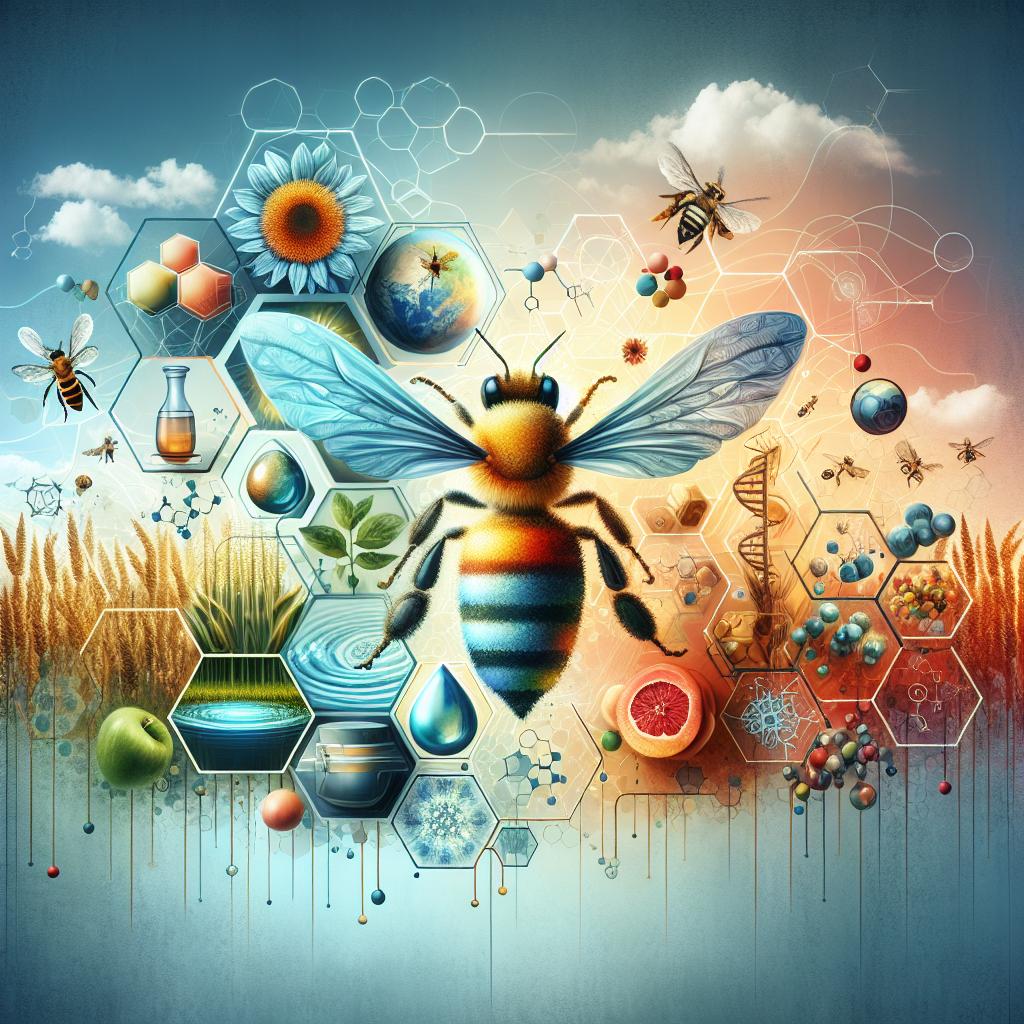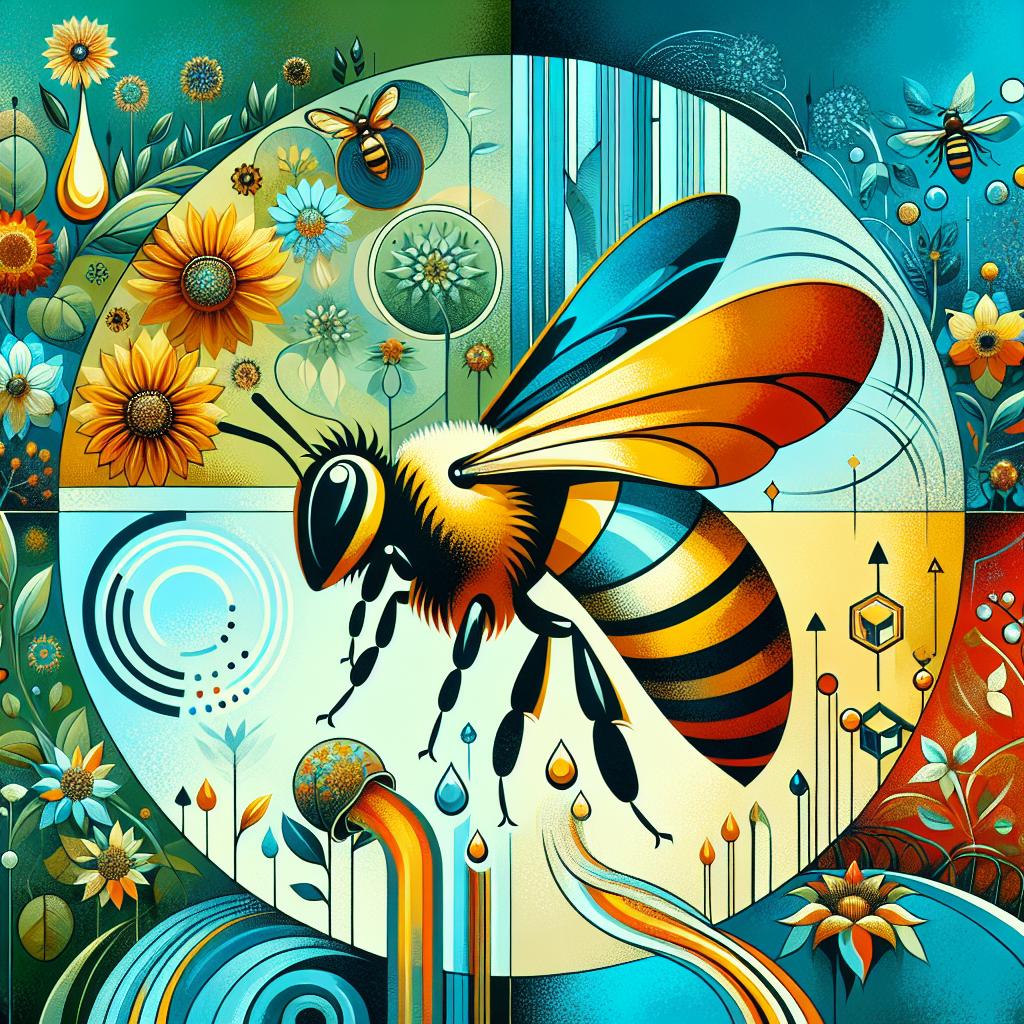This post may contain affiliate links which means I may receive a commission for purchases made through links. Learn more on my Private Policy page.
The Impact of Irrigation on Pollinator Health in Agriculture: A Delicate Balance
As the sun rises over vast fields adorned with colorful blooms, a bustling workforce of tiny creatures flits from flower to flower—these are the pollinators, nature’s unsung heroes. They’re the dedicated bees, butterflies, and beetles that play a pivotal role in our agricultural system, helping to produce the food we cherish. But beneath the surface of this idyllic scene lies a complex relationship between cultivation practices and the well-being of our pollinator friends. One crucial player in this ecological drama is irrigation. While it can nurture crops and ensure abundant harvests, it can also stir the pot in unexpected ways. Join us as we delve into the fascinating interplay between irrigation methods and pollinator health, exploring how we can strike a harmonious balance that benefits both our farms and the vital insects that support them. From innovative water management techniques to the delicate ecosystems we create, discover how thoughtful irrigation practices can lead us to a future where both agriculture and pollinators thrive together.
Understanding the Water-Pollinator Connection in Agriculture
Water management and pollinator health are intricately linked in the world of agriculture, influencing not only crop yields but also the stability of ecosystems. A well-planned irrigation strategy can create an environment where pollinators thrive. When farmers implement sustainable irrigation methods, they often cultivate a richer biodiversity that supports various pollinator species. Key practices include:
- Creating diverse habitats: Integrating flowering plants in and around fields enhances foraging opportunities for pollinators.
- Maintaining soil moisture: Proper irrigation prevents drought stress, which can negatively impact both plants and the insects that visit them.
- Using drip irrigation: This method conserves water and reduces runoff, preserving the local water quality that many pollinators depend upon.
Moreover, the timing and method of irrigation can significantly affect pollinator activity. For instance, irrigating early in the morning minimizes disruption to foraging bees, while also ensuring that flowers remain hydrated throughout the heat of the day. Creating a balance between efficient water use and pollinator needs is essential. Below is a simple overview of factors to consider:
| Factor | Impact on Pollinators |
|---|---|
| Water Availability | Supports healthy plant growth, attracting more pollinators. |
| Irrigation Timing | Affects foraging behavior and hive activity. |
| Water Quality | Influences pollinator health and longevity. |

Cultivating Balance: How Irrigation Practices Affect Pollinator Habitats
Effective irrigation practices play a pivotal role in shaping the delicate balance between crop productivity and pollinator health. When managed wisely, irrigation can enhance the quality of habitats for pollinators, such as bees and butterflies, by providing a consistent water source for flowering plants. This not only fosters biodiversity but also supports the ecosystem services that pollinators offer, including the critical task of crop pollination. However, excessive irrigation can lead to waterlogged soils, which can adversely affect local flora and fauna, diminishing the very habitats that pollinators rely on.
Moreover, the choice of irrigation method can significantly impact pollinator populations. For example, drip irrigation is often favored in sustainable farming practices, as it minimizes excess water runoff and can be precisely controlled. This aids in maintaining healthy soil moisture levels while preventing erosion. In contrast, flood irrigation may result in stagnant water, creating breeding grounds for pests that threaten pollinator health. To illustrate the variance in irrigation types and their potential effects on pollinator habitats, here’s a brief comparison:
| Irrigation Method | Impact on Pollinator Habitat |
|---|---|
| Drip Irrigation | Minimizes runoff, supports diverse plant growth |
| Flood Irrigation | Can create stagnant water, promotes pest populations |
| Sprinkler Systems | May lead to uneven water distribution, affecting local flora |
| Soaker Hoses | Encourages deeper root growth, benefiting native plant species |
By adopting irrigation practices that prioritize ecological balance, we can ensure that both agricultural productivity and pollinator habitats flourish. The relationship between these two elements is essential for sustainable agriculture, underscoring the need for farmers to consider the broader environmental impacts of their irrigation strategies.

Nurturing Nature: Strategies for Supporting Pollinator Health in Irrigated Lands
Enhancing the health of pollinators in irrigated lands requires a multi-faceted approach, embracing both habitat improvement and sustainable farming practices. Farmers can begin by incorporating diverse flowering plants into their crop fields and surrounding areas, which can provide essential nectar and pollen sources. Consider the following strategies:
- Plant native flora: These plants are typically adapted to local conditions and provide better support for native pollinators.
- Create buffer zones: Establishing flower-rich buffers around fields can reduce pesticide exposure and enhance habitat diversity.
- Implement crop rotation: Rotating crops can promote a varied ecosystem, providing different food sources throughout the growing seasons.
In addition to improving habitats, responsible irrigation practices play a pivotal role in fostering pollinator well-being. Utilizing methods that minimize water runoff and salinization helps maintain the balance of local ecosystems. Farmers should consider:
| Practice | Description |
|---|---|
| Drip Irrigation | Targets water directly to the root zone, reducing water waste and limiting weed growth. |
| Timely Irrigation | Watering during cooler parts of the day minimizes evaporation, ensuring resources are used efficiently. |
| Soil Moisture Monitoring | Using sensors to determine soil moisture can help avoid unnecessary water applications. |
By taking these proactive steps, farmers can create a more supportive environment for pollinators, ultimately enhancing both biodiversity and crop productivity in irrigated landscapes.

The Sweet Benefits: Enhancing Crop Yields Through Pollinator-Friendly Irrigation
Integrating pollinator-friendly practices into irrigation systems can bring about a flourishing environment for both crops and the essential insects that help them thrive. By adopting strategies that prioritize the well-being of pollinators, farmers can significantly boost their yield and quality of produce. This can be achieved through careful planning of when and how water is dispensed, creating a harmonious balance that supports both agricultural needs and the lifecycle of pollinators. For example, using drip irrigation not only conserves water but also minimizes disruption of pollinator habitats, allowing bees and butterflies to flourish alongside healthy crops.
Moreover, the implementation of native flowering plants near irrigation sites can enhance pollination rates, which directly correlates with increased crop yields. Farmers can create a well-rounded ecosystem by combining various irrigation techniques with these vibrant plantings. Consider the following benefits that arise from this approach:
- Improved Pollination: More flowers attract more pollinators, leading to better fertilization.
- Soil Health: Diverse plantings promote healthier soil, providing a nurturing ground for crops.
- Increased Biodiversity: Enhancing habitats encourages a wider range of beneficial species.
To illustrate the impact, here’s a simple comparison of crop outcomes with and without pollinator-friendly practices:
| Practice | Average Yield Increase (%) |
|---|---|
| Standard Irrigation | 0-5% |
| Pollinator-Friendly Irrigation | 10-20% |
Key Takeaways
As we turn off the tap on our exploration of the connection between irrigation and pollinator health, it’s clear that each droplet plays a vital role in the flourishing of our agricultural landscapes. Just as bees dance from flower to flower, weaving their magic, we too have the power to create environments that nurture these essential creatures.
Imagine a future where vibrant blooms abound, nourished by thoughtful irrigation practices that sustain both crops and the buzzing friends that help them thrive. By embracing sustainable irrigation techniques, we can support not only our harvests but also the thriving populations of pollinators that are crucial to our ecosystems.
So let’s be mindful stewards of our water and land, fostering a harmonious relationship between agriculture and nature. Whether you’re a farmer, gardener, or simply a lover of blooming beauty, remember: every small action counts in this grand tapestry of life. Together, we can cultivate a healthier planet for futures filled with honeyed sweetness and bountiful harvests. Here’s to a world where both crops and pollinators prosper side by side! 🌼🐝💧
This post may contain affiliate links which means I may receive a commission for purchases made through links. Learn more on my Private Policy page.

